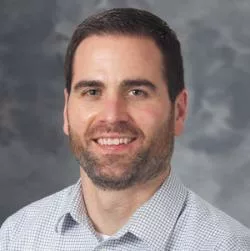“We really see tremendous potential benefit of implementing evidence-based treatment for PTSD in the prison population,” Koenigs says. Positive outcomes could include better health for incarcerated people, fewer behavioral problems at correctional facilities and safer and healthier communities after prisoners are released, according to Koenigs.
Incarcerated individuals tend to have an extremely high level of trauma exposure: In many cases, they have been exposed to domestic violence, physical or sexual abuse from a young age. Exposure to trauma leads to PTSD and problematic behaviors like substance abuse, violence and impulsive risk-taking. But therapy can help inmates learn how to trust people, form social bonds and seek future help when they need it.
“We’re hoping that improving the mental health and resilience of incarcerated people can help them be more successful when they reenter the community,” Koenigs says. Ultimately, that could translate into a lower recidivism rate for people who have been successfully treated, which in turn creates cost savings for the state in the form of lowered police, court and correctional facility spending.
Since access to therapists is a major limitation in the criminal justice system, where many people need treatment, group CPT is a good option for reaching as many people as possible. The therapy works by helping incarcerated people with PTSD modify their thought patterns, with the goal of reducing hopelessness, self-blame and negative self-related thoughts. Anecdotal results from pilot research suggest it can be effective, according to Koenigs.
“We’ve had inmates say to us how grateful they are that there’s somebody working for them, thinking about their problems and how we can treat it,” Koenigs says. “One thing we’ve been surprised about is that they don’t realize that they have this disorder or these problems, and they don’t realize that there’s a diagnosis or treatment for it.”
Pre-treatment, participants with traumatic life experience sometimes say that other people cannot be trusted, but after therapy they may be more likely to view trust as nuanced, and say that certain people can be trusted in some instances. The full study will also comprehensively measure reductions in the severity of PTSD symptoms, depression and anxiety.
Koenigs says there is great value in working with a state agency like the Department of Corrections, because it helps researchers think about the pragmatic application of their work, so it has greater potential to inform policy, rather than just “ending up in the pages of an academic journal.” But he emphasizes that the project is also about real people.
“It’s one thing just to think about these projects in terms of statistics, which is how we analyze data,” Koenigs says. “But thinking about the individuals, and the fact that if we have made a difference in how this person has processed their traumatic experience and their ability to then leave the institution and potentially lead a more fulfilling life — that’s tremendously rewarding.”
Koenigs is grateful that incarcerated people have been enthusiastic participants in the project, and says that funding from the Partnership Program has been instrumental both in getting the research off the ground and scaling it up. He is optimistic that at the end of the study, the team will be well-positioned to draw a clear conclusion about the treatment’s effectiveness and the state’s ability to implement it at a larger scale.
By Max Witynski

